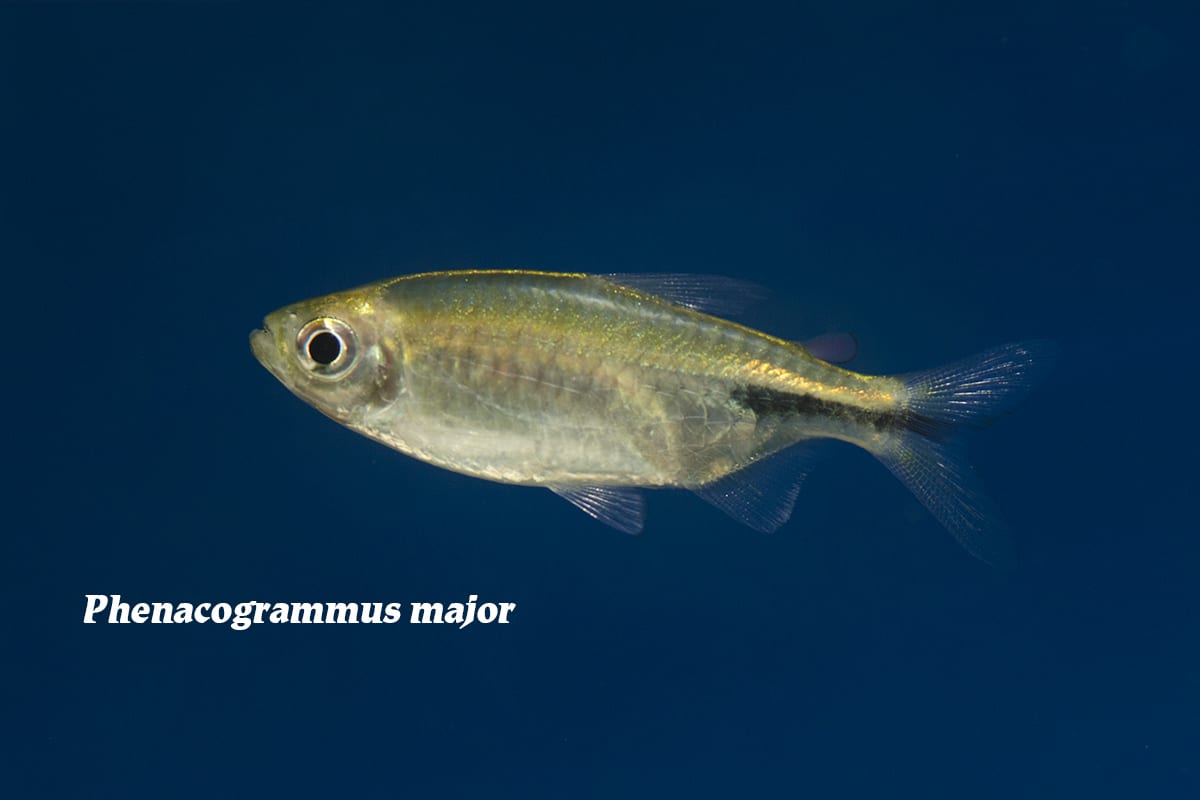Out of Africa
Out of Africa
The second largest continent in the world, Africa boasts many of the world’s bests, largests, and mosts, not to mention a rich evolutionary and cultural history that remains underappreciated by much of the Western world. Here at The Wet Spot, we are proud to trade, house, breed, and protect the unique freshwater fish species found in this beautiful part of our world. With a diverse freshwater habitat range from mountain streams passing through volcanic hot-spots to great lakes, some of our all-time favorite aquarium fish hail from Middle Africa. This week, we’d like to share 3 rare, and relatively unknown species in the trade including Benitochromis conjunctus, Danakilia sp. “Shukoray”, and Phenacogrammus major.
Scientific NameBenitochromis conjunctus
Temperature / pH71 to 77°F / 6.9 to 7.5 pH
Native LocationCameroon
Preferred DietOmnivorous
Native to the Mungo River system of Cameroon, B. conjunctus is a rare and lovely little African cichlid. Reaching just over 2.5 inches in length, they exhibit light bodies with a dark cheek-spot, some dark banding, yellow bellies, and patterned pink fins. Peaceful with conspecifics and other species alike, they are great for African community tanks. Found in middle regions of mountain streams, and lakes of West Africa, they thrive in biotope tank setups for central or west African rivers. Tanks should include fine sand or gravel substrate, muted lighting, wood furnishings and other various hiding places, vegetation like African water fern or anubias, light current, and decent filtration. Maternal mouthbrooders by nature, females scoop eggs from substrate and carry them for about 3 weeks. Adult pairs bond for life, and newly emerged fry are cared for by both parents. Truly omnivorous by nature, these cichlids do best with high-quality flake or cichlid pellets, spirulina flake, and supplemental live and frozen foods for treats a couple times a week. Tank waters should be maintained with temperatures of 71 to 77°F, pH between 6.9 and 7.5, and hardness of 90-300 ppm.
Scientific NameDanakilia sp. “Shukoray”
Common NameShukoray Cichlid
Temperature / pH80°F / 7.5 to 8.0 pH
Native LocationMiddle Africa
Preferred DietSmall invertebrates
Another rare Middle African cichlid hailing from Lake Shukoray of Eritrea is D. sp. “Shukoray”. Found in desert oasis lakes and rivers, these cichlids are the silver-lining of life in harsh climates, and are extremely hard to find in the trade. Reaching about 6 inches in length, they exhibit golden bodies with silvery-blue scale flecks, and red-tipped fins. At maturity, males are dark with bright spangles, and they develop brainiac-like humps on their heads, making them fun oddballs to keep around. Tending toward aggression, these “Shukoray Cichlids” do best in single-species tanks with plenty of swimming space; tanks of 80 gallons or more are recommended. Tanks should be set up with sandy substrate, lava rocks, wood furnishings, and heavy-duty filtration. Another maternal mouthbrooder, females scoop fertilized eggs and are responsible for all care of fry. Captive diets can consist mostly of cichlid pellets of appropriate size as they grow, with regular supplementation on live and frozen fare. Most comfortable with water conditions in the average zone, tank temperatures should be maintained around 80°F, pH between 7.5 and 8.0, and hard waters above 180 ppm.
Scientific NamePhenacogrammus major
Common NameMajor Tetra
Temperature / pH73 to 82°F / 6.0 to 7.5 pH
Native LocationCongo basin
Preferred DietOmnivorous
Lest we’ve forgotten about non-cichlid African swimmers, P. major is one of the 10 species of Middle African Tetras. Endemic to the Sangha drainage, and middle Congo River basin in Cameroon, these “Major Tetras” are boisterous, shoaling, open-water-dwelling tetras great for African community tanks. Reaching about 3.5 inches in length, these tetras have a pointed body shape with a dark stripe near their tail, and red fins. For best effect, mixed-gender shoals of 6 or more are recommended. Due to their large adult size and activity levels, they are best kept with species that are difficult to spook, and are not prone to fin-nipping like other tetras, peaceful cichlids, and some Loricariids. Tanks should be setup to mimic African rivers with sandy or fine gravel substrate, wood furniture, dense aquatic vegetation, some current, and plenty of swimming space. Egg scatterers by nature, these fish show no parental care to their fry. True omnivores by nature, Phenacogrammus consume small invertebrates including worms, insects, and crustaceans, algae, and zooplankton. In captivity they do best with diets consisting of high quality flake, spirulina flake, algae tabs, and regular live and frozen offerings to maintain best coloration. Tank waters should be kept with temperatures between 73 and 82°F, pH of 6.0 to 7.5, and hardness between 53 and 300 ppm.
Known as “the cradle of humanity”, the beauty and wonder that Africa has to offer is not lost on us. If you’re looking to set up your very own African biotope tank, The Wet Spot can help you make it a success.


